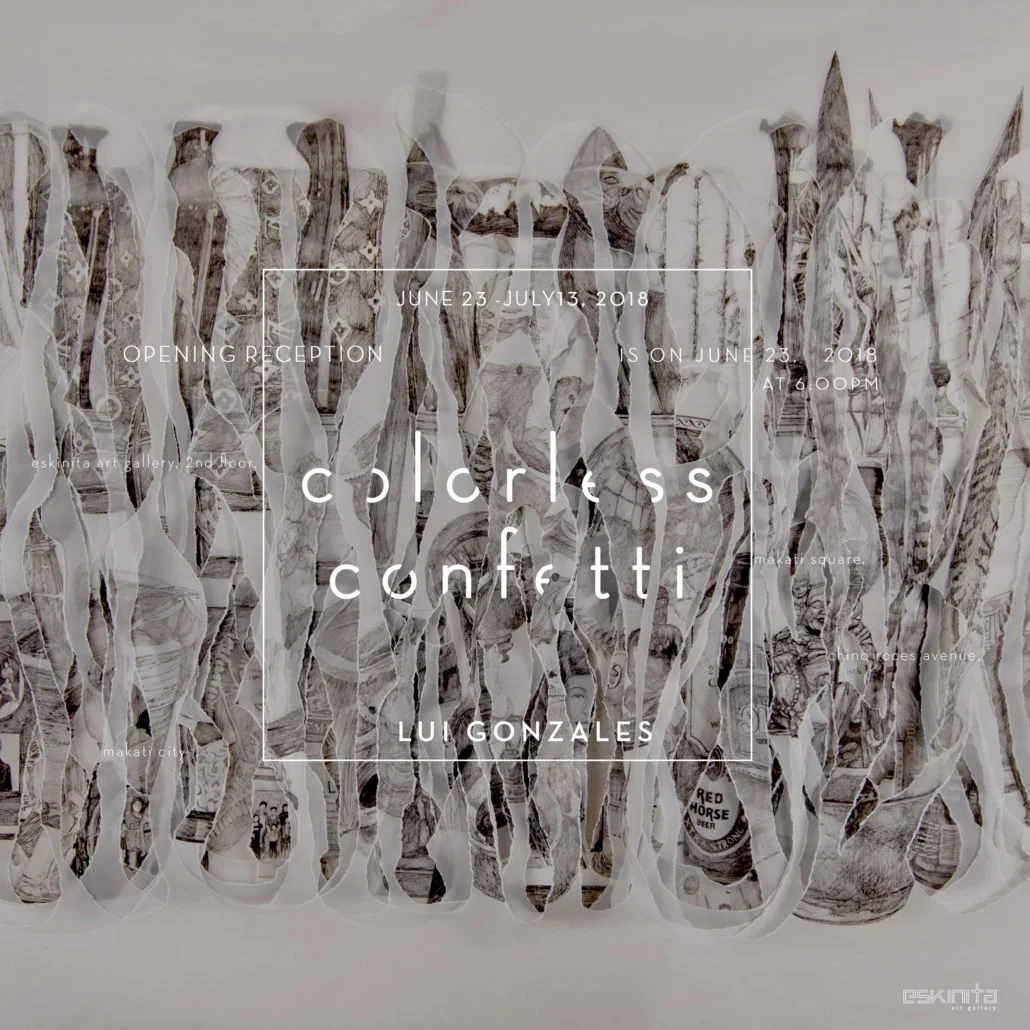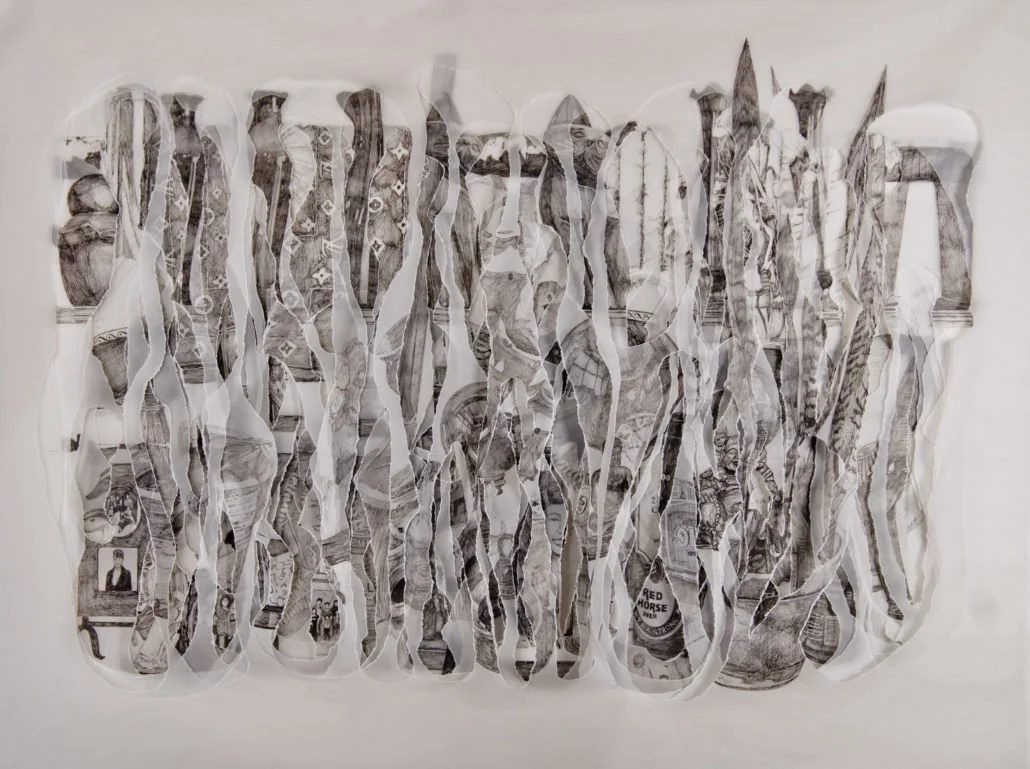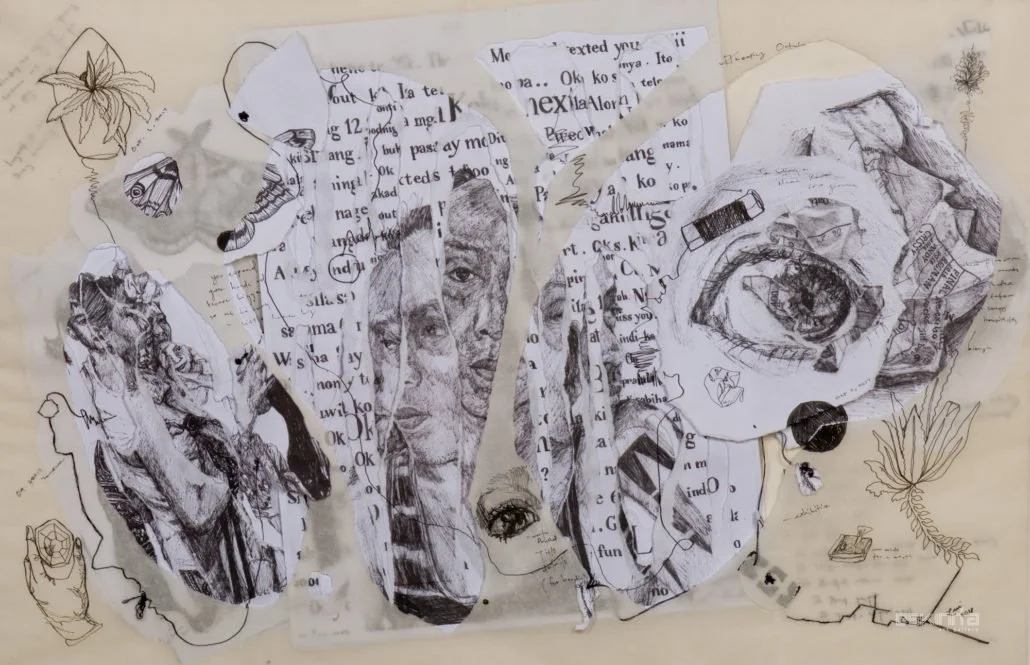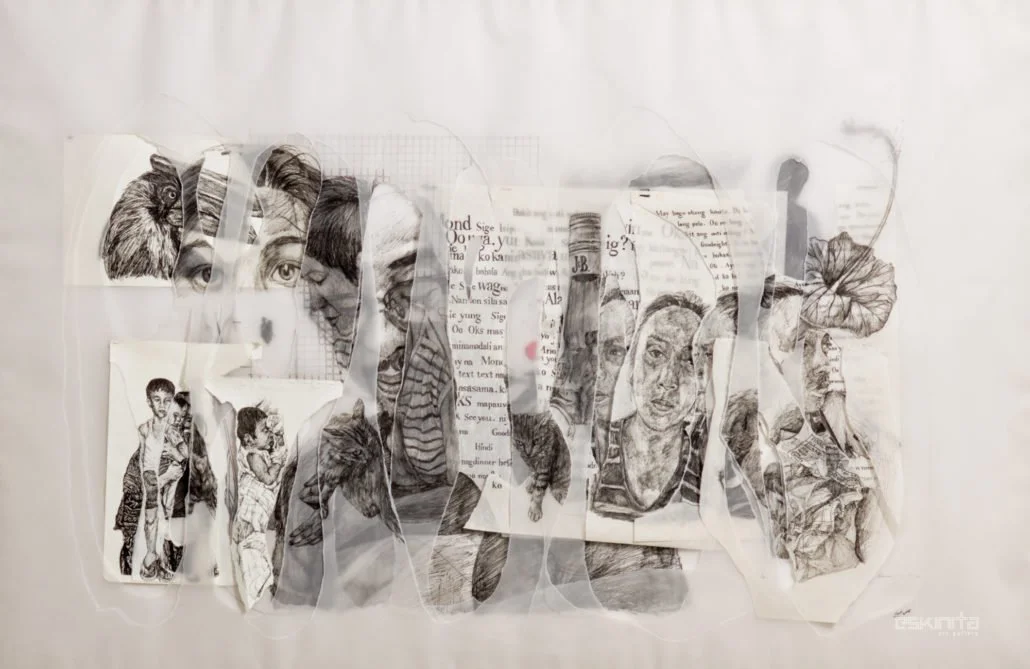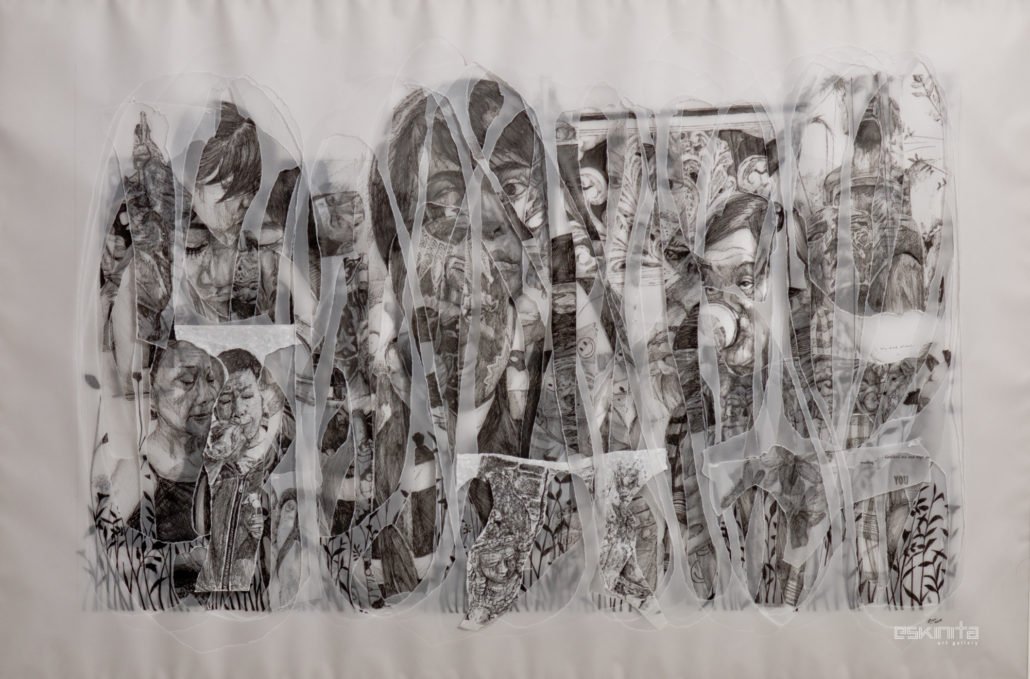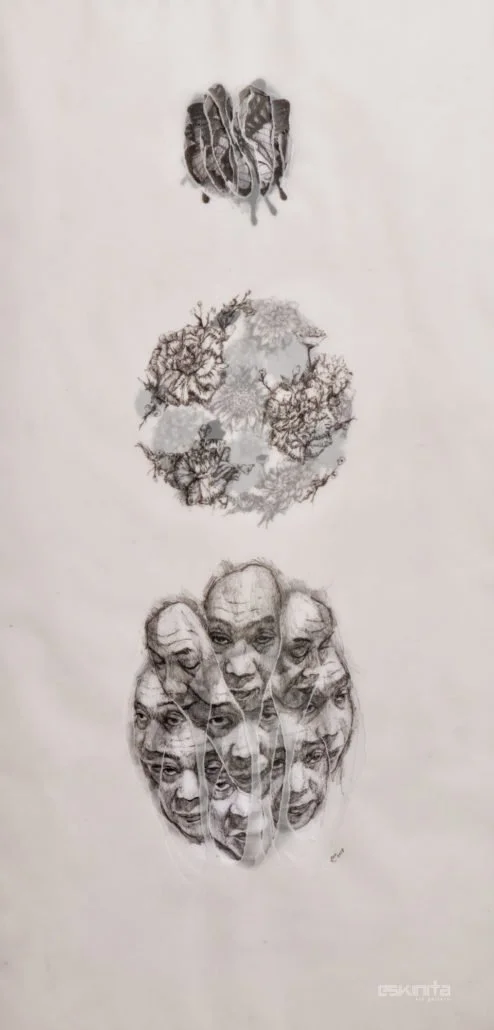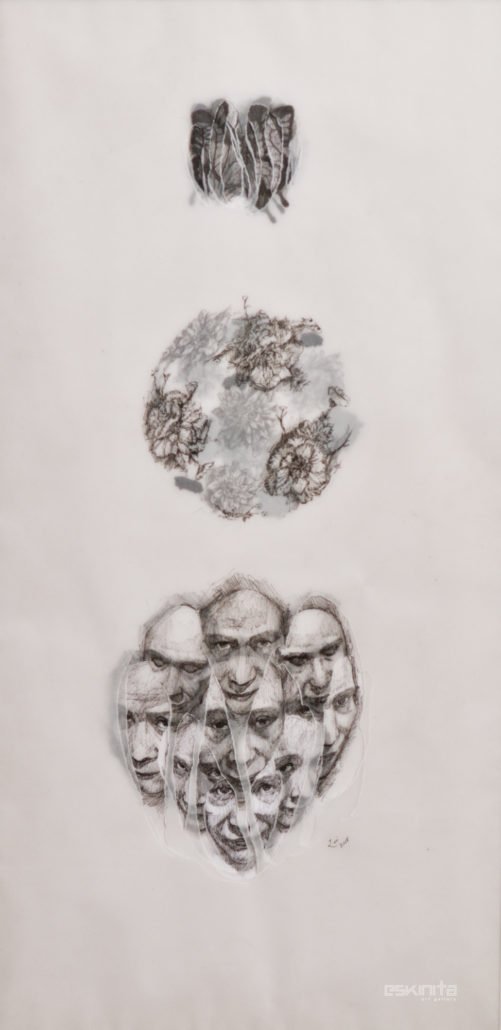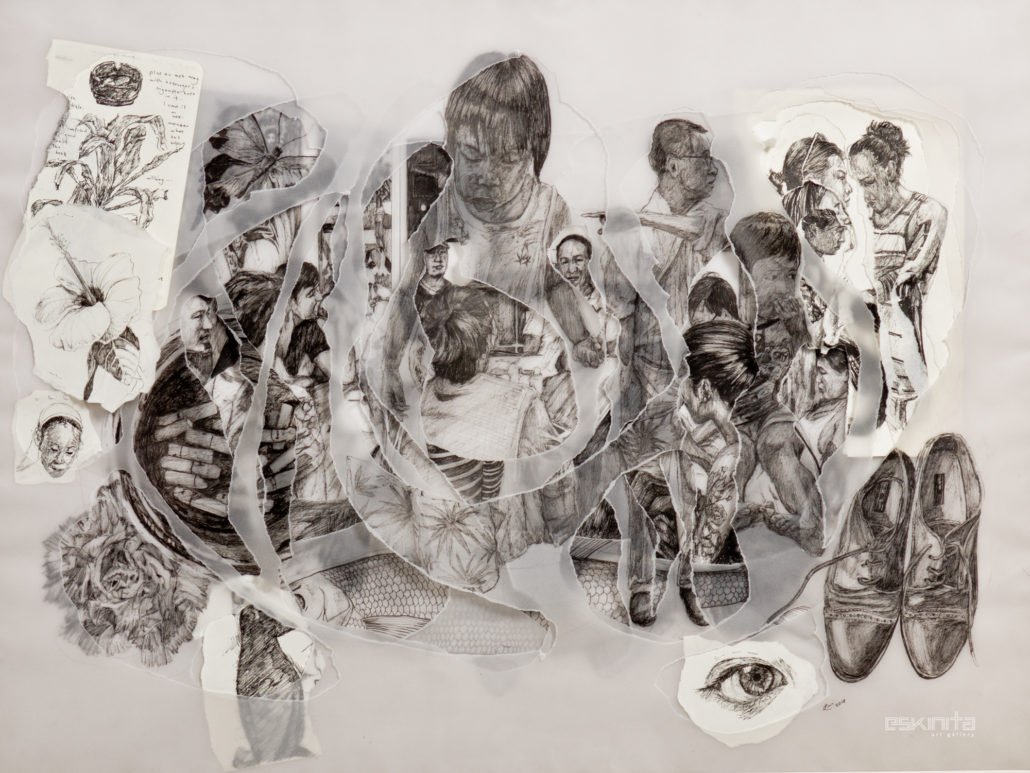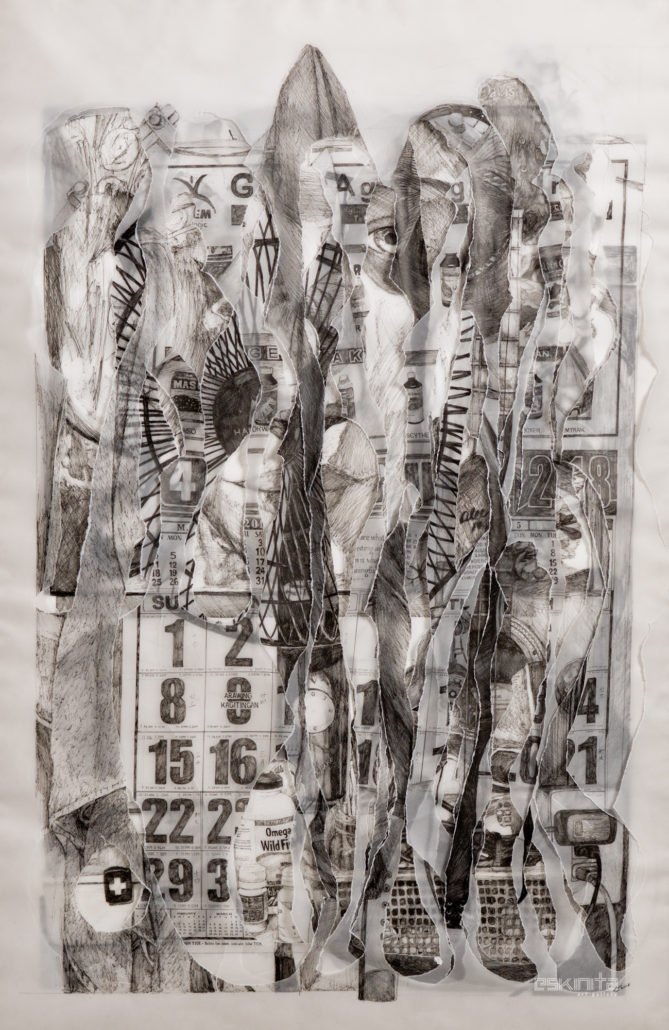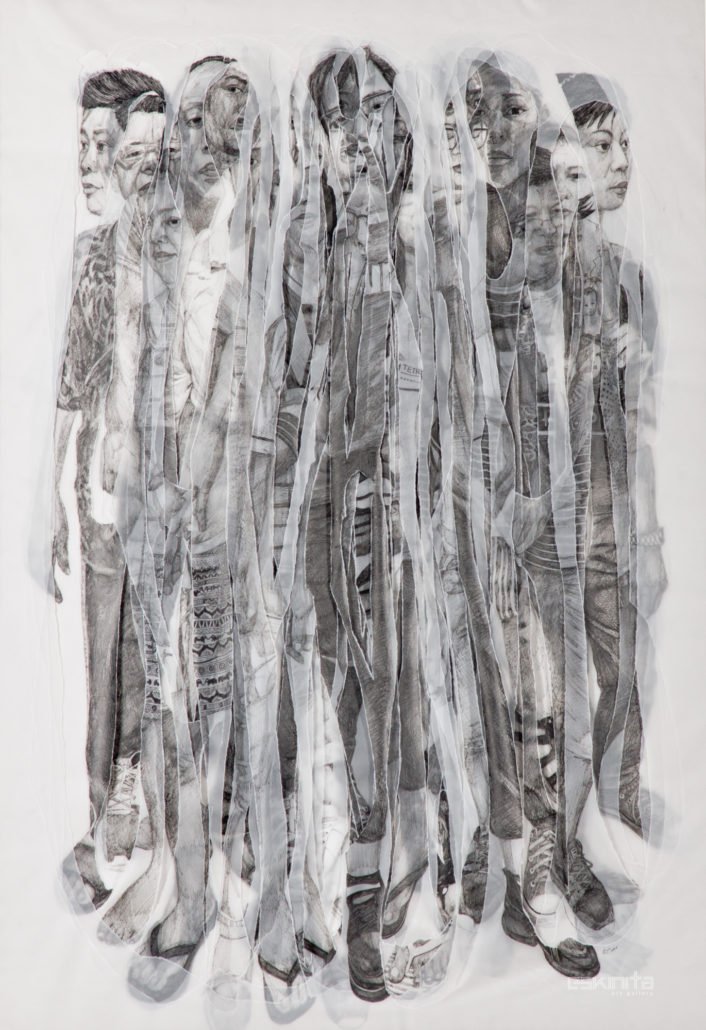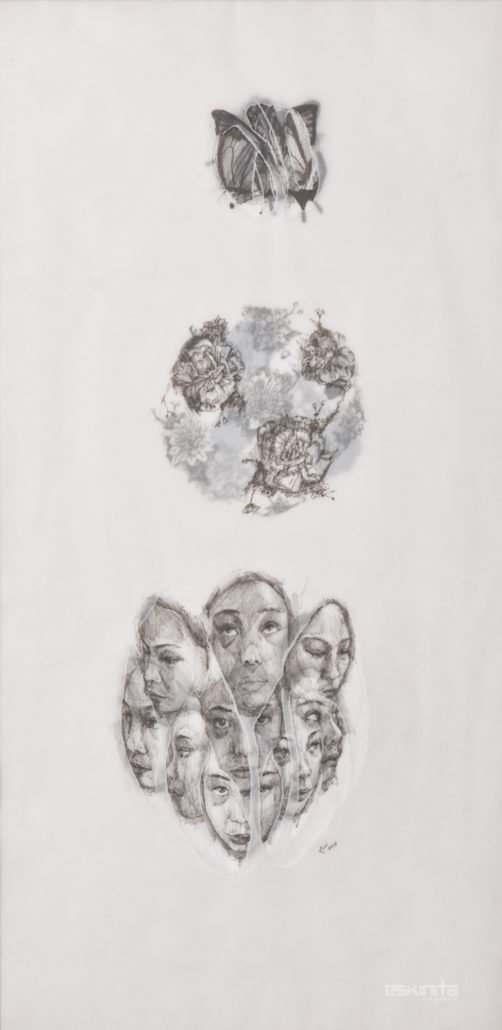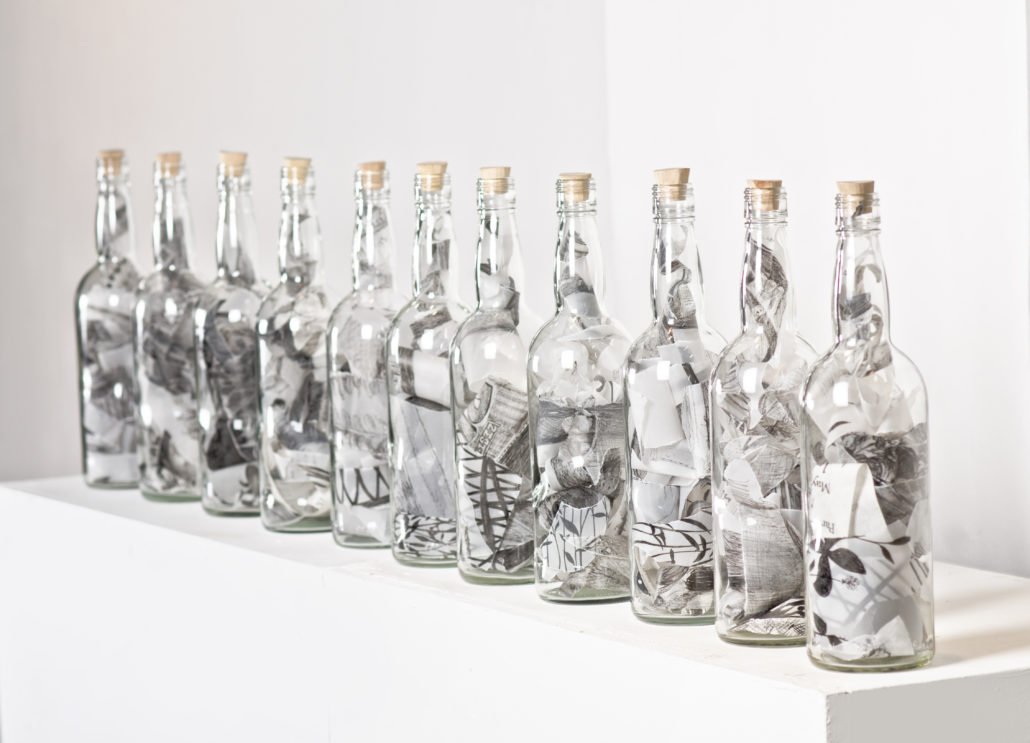
Colorless Confetti
Lui Gonzales
June 23 to July 13, 2018
Come close, inspect each work, and what you will see is a palimpsest, layer-upon-layer of imagery peeking through the holes of what seem to be ribbons of paper, overlapping and interpenetrating, asserting their figuration, their ghostly imprints. The choice of artistic form is drawing, the oldest method of making a mark. No form ever assumes wholeness and total solidity, but only fragments, like traces of a ruin. This is the world that Lui Gonzales presents to us in her first solo exhibition, Colorless Confetti—translucent, various, necessarily complex.
In each work, she approximates the texture of memory, of how it culminates, accrues, into heaps of deeply felt experiences, sensations, fantasies, that its veracity, its truthfulness, lies in its own multiplicity. After meticulously drawing figures and objects, she puts the sheets of paper on top of each other and proceeds to methodically rip away, layer by layer, with an eye on the resulting (de)composition—destruction being part and parcel of her creative process. She calls each work a composite that allows “selected thoughts shown all at once.” No memory ever gets prioritized but combines and recombines with other memories, as her way to analyze and “reanalyze details of the past and the present.” The resulting imagery is a disclosure as well as a concealment of partial and full forms which, because of the use of the tracing paper as medium, hint at their phantom silhouettes and contours. The shards of paper torn from each work representing “a metaphor for fragmented memories,” are preserved as keepsakes in bottles, broken further into little pieces (the “colorless confetti” alluded to in the title), jostling together with the splintered evidence of old works, plates, and doodles. Both the resulting wall-bound works and the installation underscore the artist’s philosophy: destruction results to grand creations and while memories are mutable and prone to degradation, nothing is ever discarded, forgotten.
-Carlomar Arcangel Daoana

